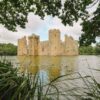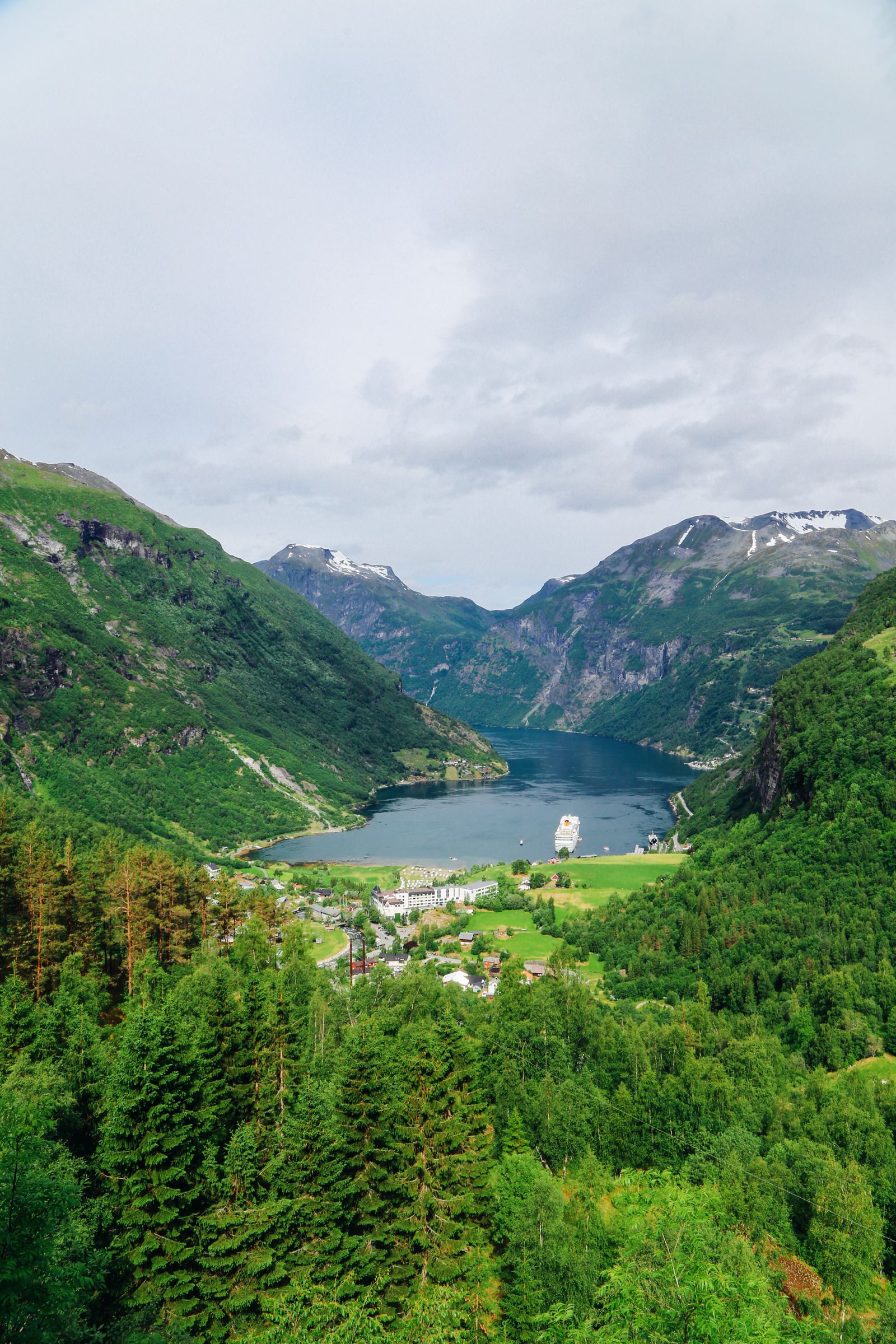Depending on who you speak to, you’ll get lots of different explanations as to why Jerusalem is so important, who the city belongs to and even what the most important place in the city is. One thing everyone can agree on though is that Jerusalem is one of the oldest and most important religious cities in the world.
Jerusalem has a history that spans across millennia, a lot of which is there to explore and experience in the city, making it not just an important spot if you’re religious but also if you have even the slightest interest in history.
One of the biggest surprises of visiting though was definitely seeing how the city’s varied history brought together three distinctly different religions and how the city is important to each one. Typically religious sites in most other places across the world tend to be more important to just one religion, not several all at once and especially so not with how important and highly revered the city is to each religion.


Then there’s how beautiful it is too! In some ways, it feels like walking back in time with buildings here that are thousands of years old – except, of course, updated and preserved for modern times.

Suffice to say, a visit to the city is one that you absolutely have to add to your travel plans. Oh, and while you’re here, I’d recommend getting a guide.
You can easily explore without one but there’s so much detail to the city (for instance, the Via Dolorosa below) that you might perhaps otherwise miss if you just wanted around for the first time without know where you’re going to.


Rather than carrying on about how amazing the Jerusalem is, let me show you exactly what I mean, as well as the very best things to do in Jerusalem when you visit.
1.) Church of the Holy Sepulchre
The Church of the Holy Sepulchre is considered to be the holiest site in the world for Christians and is reported to be built on the place that Jesus Christ was crucified, buried and resurrected.
The building as it stands was built and destroyed several times over thousands of years with what exists now being a rather huge and impressive church.



Given its huge significance, be prepared to queue here if you want to see most of the main sights in the church with some queues lasting hours – especially so the queue to see Jesus’s tomb where he resurrected from.
The Church of the Holy Sepulchre is also the most important and final spot on from the Via Dolorosa pilgrimage (which I’ll explain further below).
2.) The Western Wall or The Wailing Wall
The Western Wall is actually what’s left of an ancient temple of Jerusalem and is a hugely hallowed site for people of the Jewish faith, Christians and Muslims. The wall was first constructed around 19BCE and is easily one of the oldest places to visit in Jerusalem.
When you visit, there are separate sections for men and women – with men having to cover their heads; women don’t have the same requirement though they need to cover their shoulders and legs.



There’s a whole etiquette to visiting which, while not enforced (e.g. taking a few steps away from the wall, walking backwards so you don’t turn your back to it) is greatly appreciated as this is an important and much-revered site in Jerusalem (having a guide here was invaluable because the knowledge and details provided here really helps you understand why the Western Wall is so important to so many people).
3.) The Temple Mount or Haram esh-Sharif
Haram esh-Sharif is considered to be one of the holiest sites in Jerusalem – revered by Jews, Christians, and Muslims for multiple reasons. I’d attempt to go into each one but I feel like Wikipedia might best serve this purpose as it’s far too long and too detailed to get into here.
It is worth noting that this is one of the harder places to visit in Jerusalem due to its huge importance, making it reserved more for prayer than anything else.
In modern times (i.e. these days), the stunning Dome of the Rock stands proudly on this site and is the most iconic landmark in the city. The central dome of this church glitters with gold and the colourful tiled exterior walls are absolutely beautiful.
4.) Dome of the Rock
As mentioned before, the Dome of the Rock is actually on the Temple Mount and is an intricately designed Islamic shrine, which – in addition to the Western Wall and the Church of the Holy Sepulchre is a UNESCO World Heritage site.
If you want to visit, be prepared to queue as admission is only allowed in at certain times (it’s used otherwise for religious purposes) and as such, be prepared to set aside a fair bit of time to explore it properly.
5.) Armenian Quarter


Jerusalem has played host to a large Armenian community for many years and this quarter is packed full of charming ancient architecture and historical buildings.
Armenians also know quite a thing or two about pottery and ceramic works so this is a great spot to visit to grab yourself a souvenir. (By the way, there are 4 quarters in total in Jerusalem – the Armenian quarter, the Christia quarter, The Jewish quarter and the Muslim quarter).
The centre of the Armenian Quarter is located on the Armenian Patriarchate Road and spreads outwards to include the churches of St. James and St. Mark. This is a fantastic part of the city that is often explored less than the more well-known sites.
6.) Via Dolorosa
Another hugely important site for those of the Christians the world over, the Via Dolorosa, or the Way of Sorrow is reported to follow the route that Jesus Christ took when carrying the cross to Golgotha. It follows all the 14 stations of the Cross and when you’re here, you can follow this same route, ergo why this is a hugely important site for Christian pilgrims.


On Fridays, you can actually follow a procession that is led by Franciscan monks through the Via Dolorosa. If you’re there on any other day (or to make the most of this route), it is worth having a guide who can point out each station as you go along.
7.) Christian Quarter
Situated north of the Jaffa Gate and centred around the impressive Church of the Holy Sepulchre, the Christian Quarter is an absolute must.


Within the confines of this quarter is a swath of beautiful architecture from various ages, and a myriad of bustling Souks, markets, and pleasant cafes. Notable sites include the Ethiopian Monastery, the Church of St. John the Baptist and the Protestant Christ Church.
8.) The Tower of David


This complex actually has no connection to King David and is also known as the Citadel. Built in 24 BC, this ancient structure has stood proudly for thousands of years and was erected by the notorious King Herod.
Within this structure is the interesting Tower of David Museum that displays the history of the city and its evolution.
It is also possible to climb to the rooftop of the citadel for fantastic views of Jerusalem across to the Church of the Holy Sepulchre. (Highly recommend it, it’s one of the best views of the city and really helps you get a sense of where everything is.)
9.) Muslim Quarter


If you are looking for a place to shop and experience local life, the Muslim quarter is one of the best places to visit. It’s perhaps the busiest of all the quarters with its bustling markets, busy restaurants and refreshing juice spots to cool off in the heat (it was sooooooo hot when we visited).


Starting at Damascus gate, the Muslim quarter is bursting with activity and is a fantastic place to find a bargain, haggle with the locals or visit the historic Pool of Bethesda.
10.) The Cardo



I was so fascinated and excited about this one as I’d just a few months before, seen the oldest mosaic map in the world (in Jordan) which referred to this spot.
The Cardo essentially was like this long as grand walkway with Roman columns adorning the path and a market bustling all around. The map in Jordan (the Madaba map) even showed the Cardo with the columns it would have had back then.
While you’re there, to get a sense of what this once bustling part of the city looked like, keep an eye out for the mural depicting the old city of Jerusalem.
11.) Jewish Quarter


The Jewish quarter is where you’ll find some of the most important spots to visit in the city e.g. Western Wall and the Cardo, amongst others.
Now while you might not necessarily notice when you switch from one quarter to another here, you do notice a big difference in how the quarters are organised. The Jewish quarter being, perhaps with the exception of the Armenian quarter (and the main sight in it – the Western Wall) being fairly quiet compared to say the busier Muslim and Christian quarters.


If you’re looking for a break from the crowds, this is easily one of the best parts of the city to explore.
12.) Mount Zion
Another hugely significant religious site, Mount Zion is the place where Christ held the Last Supper and where the Virgin Mary lived during the later years of her life. For the Jewish community, this is also the place of King David’s Tomb.
Located on this hill today is a variety of stunning shrines and churches; furthermore, you can also see the expanse of the city on a clear day.
13.) Kidron Valley
Located between Mount Zion and Mount of Olives; this is one of the most ancient parts of Jerusalem. This is the area that both Muslims and Jews believe that the Last Judgment will take place.
Archaeological excavations have found structures dating back as far as 4000 years old and various tunnels and temples are open to exploring such as Warren’s Shaft, Hezekiah’s Tunnel and the Pool of Siloam.
14.) Jaffa Gate
This ancient gate used to be one of the 7 gates into Jerusalem and is quite the architectural masterpiece to behold. It was built in the 1500s and was done in an L-shape as a defensive measure to help slow down attackers.
It’s easily one of the best things to do in Jerusalem you want to get a sense of what it looked like centuries ago and can be done either as you enter Jerusalem or indeed, as you leave.
READ MORE: To see more from when we visited Jerusalem (as well as where to go for food), check out these posts below.
Check Out The Very Best Of Great Britain!

































